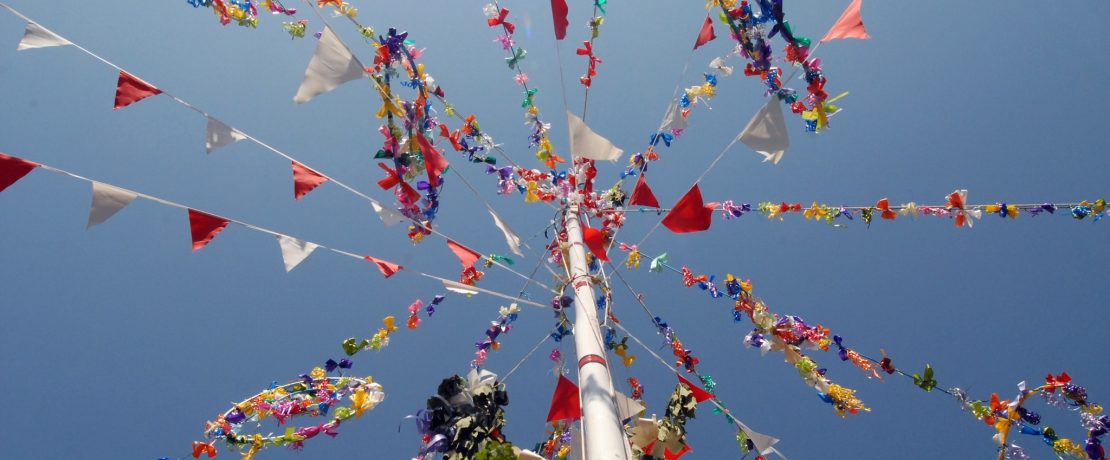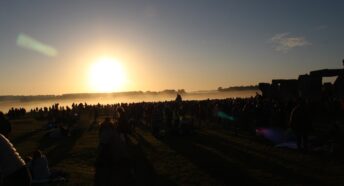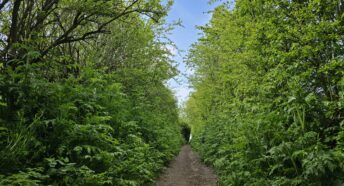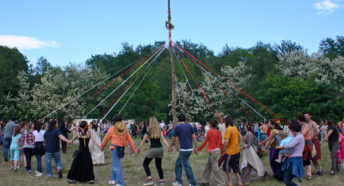Celebrating the month of May
As spring unfolds across the country, it’s time for the rites of spring.
Hawthorn treats
By the beginning of May spring has lavishly decorated the countryside with flowers and greenery. A plant that’s strongly associated with May is the hawthorn, also known as the May tree. Indeed, by the middle of this month, this tree will be dripping with blossom like a generously iced cake.
It doesn’t just look good enough to eat: you can even nibble the young leaves when they emerge. Their nutty flavour earns the hawthorn another nickname: ‘bread and cheese tree’. Later in the year, there’ll be plenty of berries for birds and small mammals to eat, and foragers can also use these haws to make gin, jelly and even ketchup.
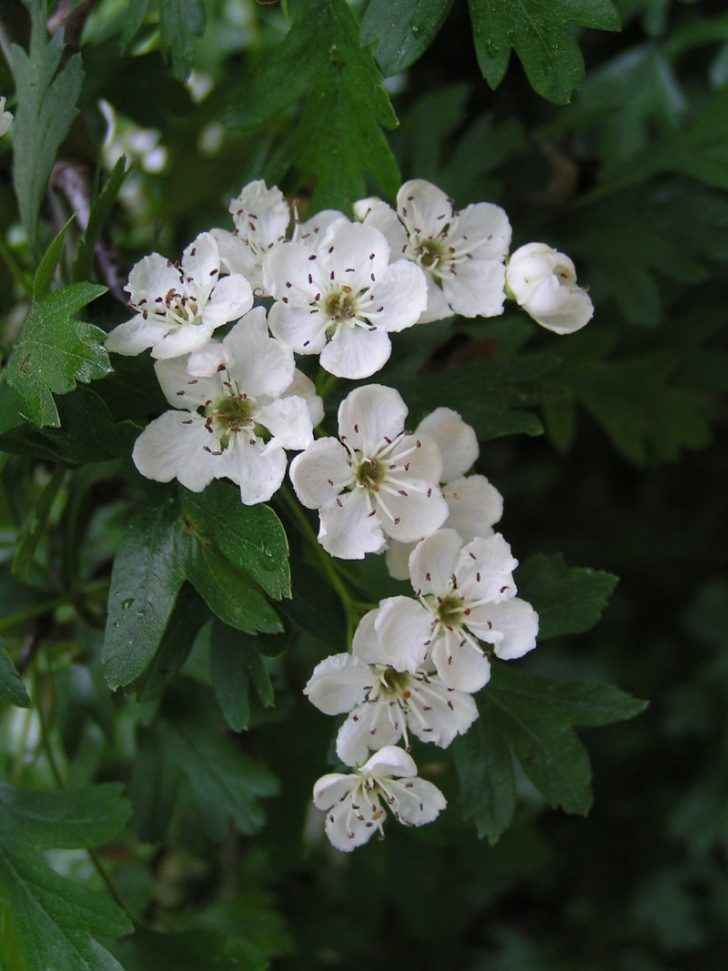
Along with its culinary uses, this super hedgerow shrub has cultural links. One well-known hawthorn legend relates to the town of Glastonbury, Somerset. It’s said that Joseph of Arimathea, who buried Christ after the crucifixion, came to Britain and visited Glastonbury Tor (a distinctive hill) with some disciples. He thrust his staff into Wearyall Hill, and the area sprouted into a hawthorn.
Some of the supposed descendants of this tree, the Glastonbury Thorn, can still be found in the area. Unusually, these flower in December as well as in May. A sprig is cut from one each year and sent to the Queen to decorate her Christmas table.
Hawthorn has traditionally played an important part in seasonal ceremonies. Its flowering boughs were gathered when people went ‘a-maying’, and used to decorate doorways.
Maypole dancing
Greenery and blossom from plants like the hawthorn feature in the crowning of the May Queen, as she’s linked with Flora, Roman goddess of flowers and spring. The Museum of English Rural Life says that the May Day crowning ceremony probably started in the 1800s and would have been made more popular by Alfred Tennyson’s poem The May Queen. The May Queen usually leads a procession to where ceremonies and dancing, including around the maypole, begin.
Maypole dancing is a centuries-old seasonal highlight of the country calendar and is thought to have started during Roman times. Dancers weave long coloured ribbons together as they dance, tying them around a pole as they go.
The nature of the dance has changed over time. It began as a fertility rite, and its carnal overtones horrified Oliver Cromwell and the Puritans so much that they banned it in 1644. They described celebrations of May Day as ‘a heathenish vanity generally abused to superstition and wickedness’.
When the monarchy was restored in 1660, maypoles were put back up all over the country in celebration! In the 19th century, Victorians changed maypole dancing to a children’s activity – and added the ribbons we see today. Britain’s tallest maypoles are the 27metre poles at Nun Monkton in North Yorkshire and at Barwick-in-Elmlet near Leeds.
Costumes and ceremonies
The maypole isn’t the only place people will take part in a May Day dance: there have been Morris dancing ‘sides’ or ‘teams’ in England for at least 600 years. Clad in their own traditional local morris regalia, which may include bells, handkerchiefs and ribbons, they perform on the village green or outside the pub.
Morris dancers are an integral part of the Jack in the Green festival in Hastings, East Sussex. This ran for many years up to 1889 and was revived in 1983, although cancelled in 2020 due to the coronavirus pandemic. The traditional Jack in the Green is thought to have originated when various guilds and groups of tradespeople were trying to outdo one another with increasingly elaborate May Day accessorising.
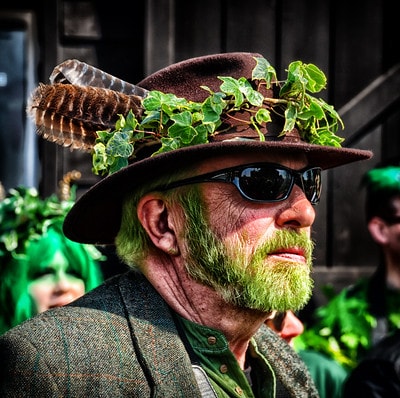
The chimney sweeps eventually came up with a leafy costume that covered the entire body, often worn with a crown of flowers: Jack in the Green. Along with the morris dancers, Jack, and the sweeps, giants, drummers, a May Queen and other characters form a lively procession through Hastings.
In Clun, Shropshire, there’s usually a fight for supremacy between the Green Man and the Frost Queen at the Battle of the Bridge. It’s said that if the Green Man loses, there will be no summer in the Clun Valley! The Clun Green Man Festival will return in 2021.
Easter equines
Another colourful tradition taking a break in 2020 is ‘Obby ‘Oss (hobby horse) Day in Padstow, Cornwall. This popular event has been running since at least the early 1800s. The town is first decorated and its maypole put up on the evening of 30 April. Then in the morning two ’Osses, male dancers wearing a disc-shaped black frame and a mask, emerge from their stables. They dance through the street to a traditional May song and music played by accordionists and drummers, each ‘Oss led by a ‘Teaser’, who waves a ‘Teaser Club’. They’re accompanied by dancers dressed in white and followed by large crowds of locals and tourists.
Real horses feature in a parade on the border with Scotland: the Riding of the Bounds at Berwick-upon-Tweed. Since 1607, people have been saddling up and riding the 15-mile boundaries of Berwick. This was originally done to check land divisions and avoid disputes but is now much more of a pageant, followed by trotting races. These include a race at Canty’s Bridge, thought to mark the border crossing by Margaret Tudor as she travelled to her wedding with James IV of Scotland in 1502.
Curious customs
Quirky local May customs aren’t restricted to the beginning of the month. The annual cheese rolling at Cooper’s Hill near Gloucester, which sees runners hurtling downwards after a wheel of cheese, normally happens on spring bank holiday Monday. Injuries to participants and spectators are common and have in the past included broken limbs, participants knocked unconscious by a stray cheese… and being struck by lightning!
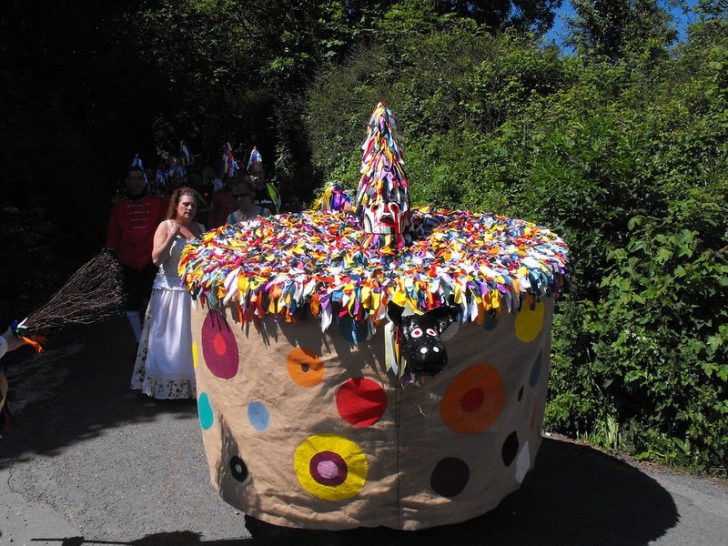
On the same day, at Combe Martin in Devon, there’s usually another extraordinary event. The Hunting of the Earl of Rone began in the early 1600s and was revived in the 1970s. The ‘earl’ is hunted throughout the weekend before being found on Monday. He’s then paraded through the village and down to the beach with costumed dancers, musicians and grenadiers. On the way there are several pauses while the earl is shot but then revived by another character, the Hobby Horse. Eventually they reach the sea where he is shot one final time and thrown in the water.
From hawthorn gathering to horses galloping, and crowning royals to cheese rolling, May Day is one of the liveliest dates in the country’s calendar.
Have we missed any from our list? Get in touch on Twitter, Facebook or Instagram and share your favourite May Day custom.
